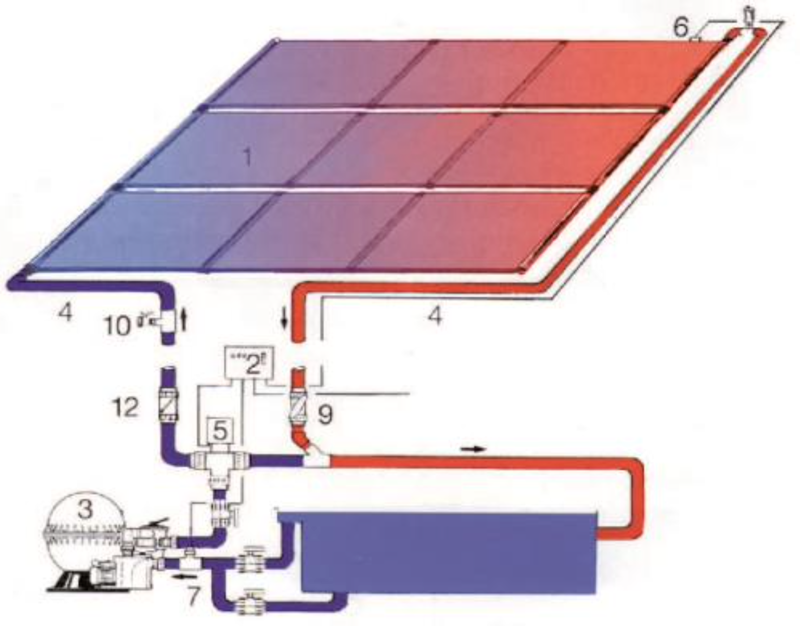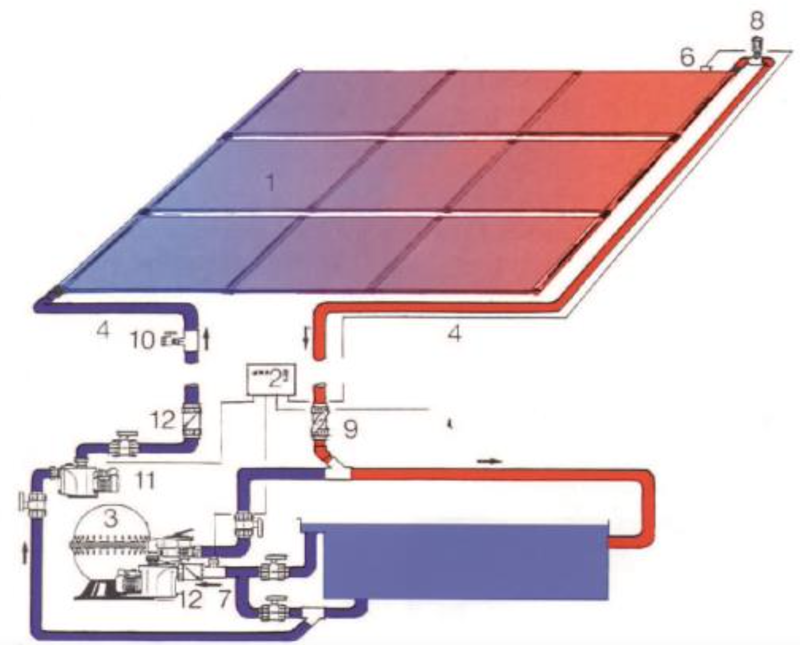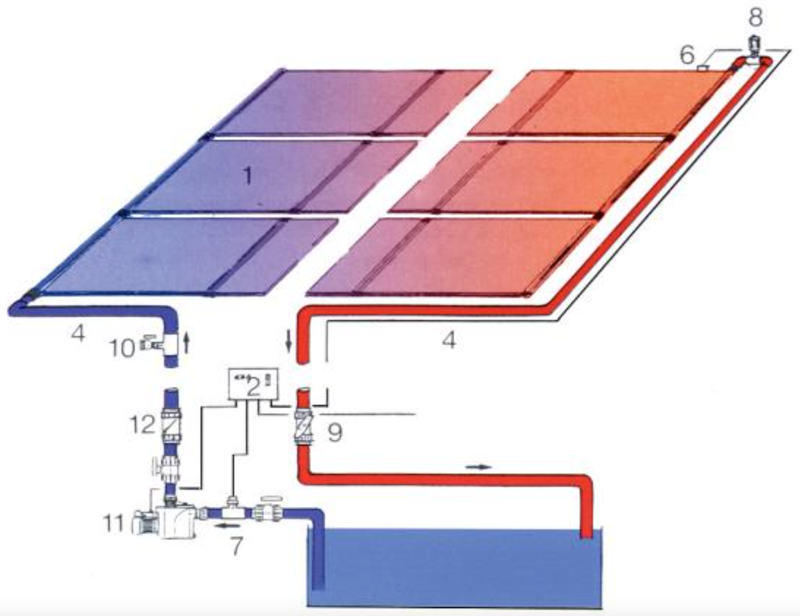One thing is clear: if the sun is not shining or if it is cold, the pool will not be heated.

But when the sun is shining, you can use solar energy efficiently and cost-effectively with absorbers to heat the pool and maintain the desired temperature. There are three methods.
- Running over the filter pump via a three-way ball valve using a differential temperature control.
![ECODROP: Solar heating: operation with filter pump ECODROP: Solar heating: operation with filter pump]() This connection type is ideal if the absorbers are not installed higher than 6 m above the water surface. The three-way ball valve is installed in the pressure line of the filter system. The differential temperature control switches the three-way ball valve over when the absorber temperature is higher than the swimming pool water temperature. The filter flow is then pumped through the absorbers. The heated water flows back into the filter circuit via a T-piece.
This connection type is ideal if the absorbers are not installed higher than 6 m above the water surface. The three-way ball valve is installed in the pressure line of the filter system. The differential temperature control switches the three-way ball valve over when the absorber temperature is higher than the swimming pool water temperature. The filter flow is then pumped through the absorbers. The heated water flows back into the filter circuit via a T-piece. - Operation with own pump and differential temperature control integrated in the filter circuit
![ECODROP: Solar heating: operation with separate pump integrated in the filter circuit ECODROP: Solar heating: operation with separate pump integrated in the filter circuit]() The installation of a separate pump for the solar heating makes sense or is necessary in some cases if the delivery height from the water level to the absorber field is more than 6 m or is far away. The water is branched off by a T-piece in front of the filter and pumped through the absorbers by the additional pump. This pump is switched by the differential temperature control, ensuring that the pump only runs when there is actual heat gain. The filter and solar pump are controlled independently of each other - the filter circuit is not burdened.
The installation of a separate pump for the solar heating makes sense or is necessary in some cases if the delivery height from the water level to the absorber field is more than 6 m or is far away. The water is branched off by a T-piece in front of the filter and pumped through the absorbers by the additional pump. This pump is switched by the differential temperature control, ensuring that the pump only runs when there is actual heat gain. The filter and solar pump are controlled independently of each other - the filter circuit is not burdened. - Operation with own pump and differential temperature control: Piping independent of the filter circuit
![ECODROP: Solar heating: operation with separate pump in own circuit ECODROP: Solar heating: operation with separate pump in own circuit]() Here, too, the pump is only started up when the outside temperature is higher than the pool temperature and only until the desired pool temperature is reached. This installation makes sense if the hot water circuit can be operated completely separately from the filter system. This solution protects the filter system.
Here, too, the pump is only started up when the outside temperature is higher than the pool temperature and only until the desired pool temperature is reached. This installation makes sense if the hot water circuit can be operated completely separately from the filter system. This solution protects the filter system. - It is also possible to run the separate circuit via a heat exchanger. The advantage is that a thermal fluid can be used, that is more heat efficient and frost-proof. The disadvantage is that it requires an additional equalisation basin and an expensive heat exchanger.







